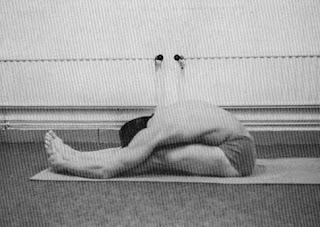Asanas

Asana is not a particular posture, but a state. Within the word asana itself are the connotations of strength and firmness, as well as the connotations of pleasantness and comfort. This is the balance we are trying to achieve, strength and flexibility, not only in the physical postures, but also in our mental state.
Take The Ambition Out Of It
Everybody is unique and their progression in yoga is going to look differently than the person next to them. It is important to allow the asanas to arise out of an internal place rather than some externally imposed idea of what the posture should look like. As long as you are working at your peak, combining breath, bandhas, and movement, and you are gaining that internal sense of stretching and strengthening, you are exactly where you needto be.
In the beginning, the physical aspects of the postures will affect you the most. In time, and as you progress, you will become more aware of the flow of prana, life force, moving through your body. As your practice evolves, these subtle, but deep movements will reawaken your awareness and control of your body, leaving you both relaxed and full of energy.
To Flex Is To Stretch
By flexing your quads you will notice your hamstrings get a deeper stretch. As you pull your abdominals inward and upward you can feel the lower back lengthening. Maintain a flexed contraction within the stretch by engaging the opposing muscles. Don’t sink into your knees or lock them. Always lift up the kneecap by flexing the quadriceps. Maintain awareness also of your elbows, shoulders, and wrists. The intention is to bring life energy into our bodies, for this we need awareness.
Some Tips
• Visualize yourself in the posture before moving into it. Some of our resistance is just a conditioned mental idea that we cannot do the posture. Change the mental idea.
• Never force it. Allow the breath to move you gradually deeper into the posture.
• Focus on the breath to bring lightness, ease, and fluidity into the movement. This is not about contorting your body into some frozen posture, there is always movement in the stillness.
• Be patient with yourself, notice that the more even your breath, the slower the breath, the easier the movement.
• Let the thoughts go by, notice them as just thoughts, and then let them go.
• Notice how persistent the mind can be.
• Feel the breath as an extension of the bandhas.
• What happens to your spine if you connect breath and bandhas as you move into a posture? And if you don’t?
• As you flex the front of your thigh (quadriceps), notice the extended stretch on the opposite side (hamstrings).
Fearasana
One of the greatest obstacles is fear. Go into the resistance, allow the body to open. S U R R E N D E R.



Comments